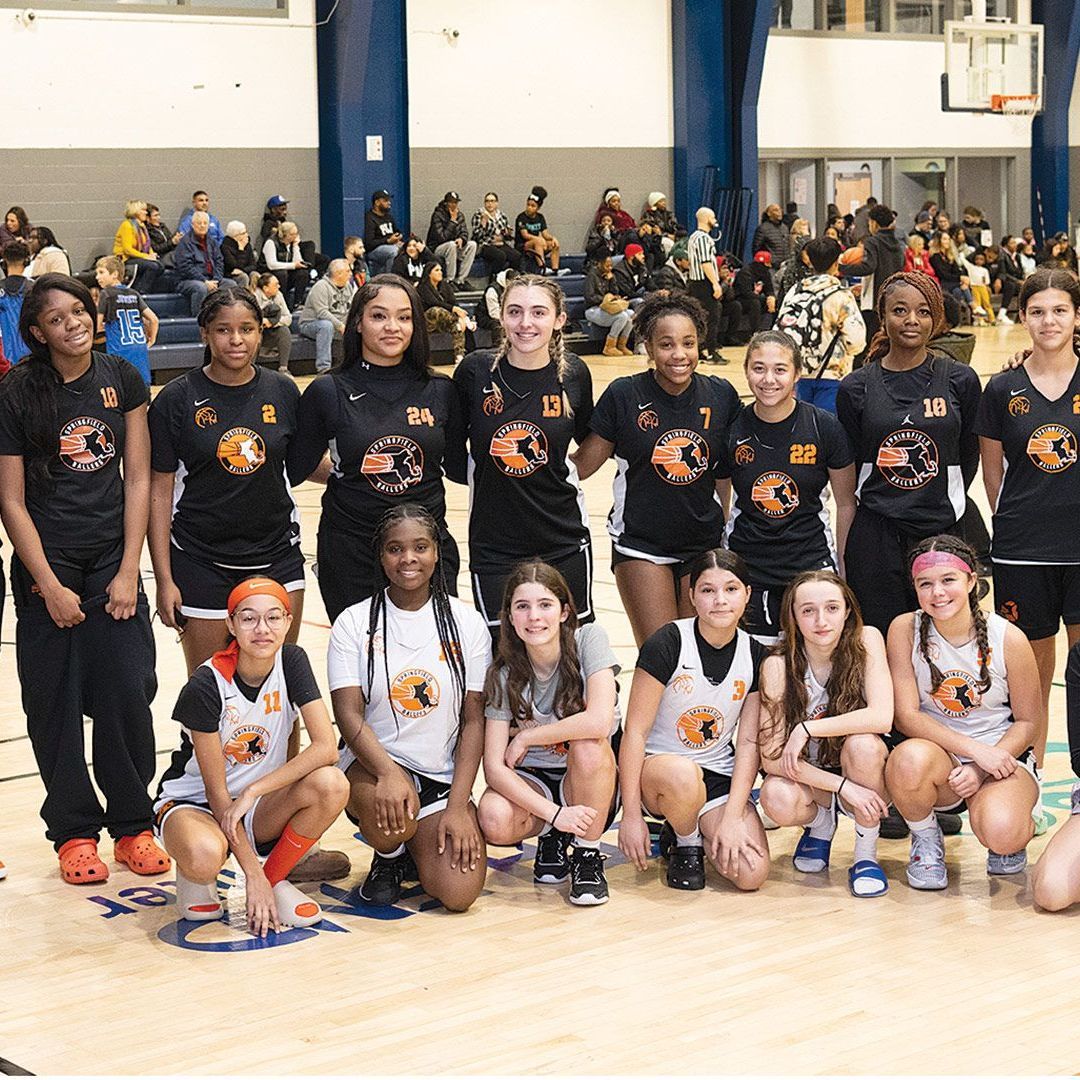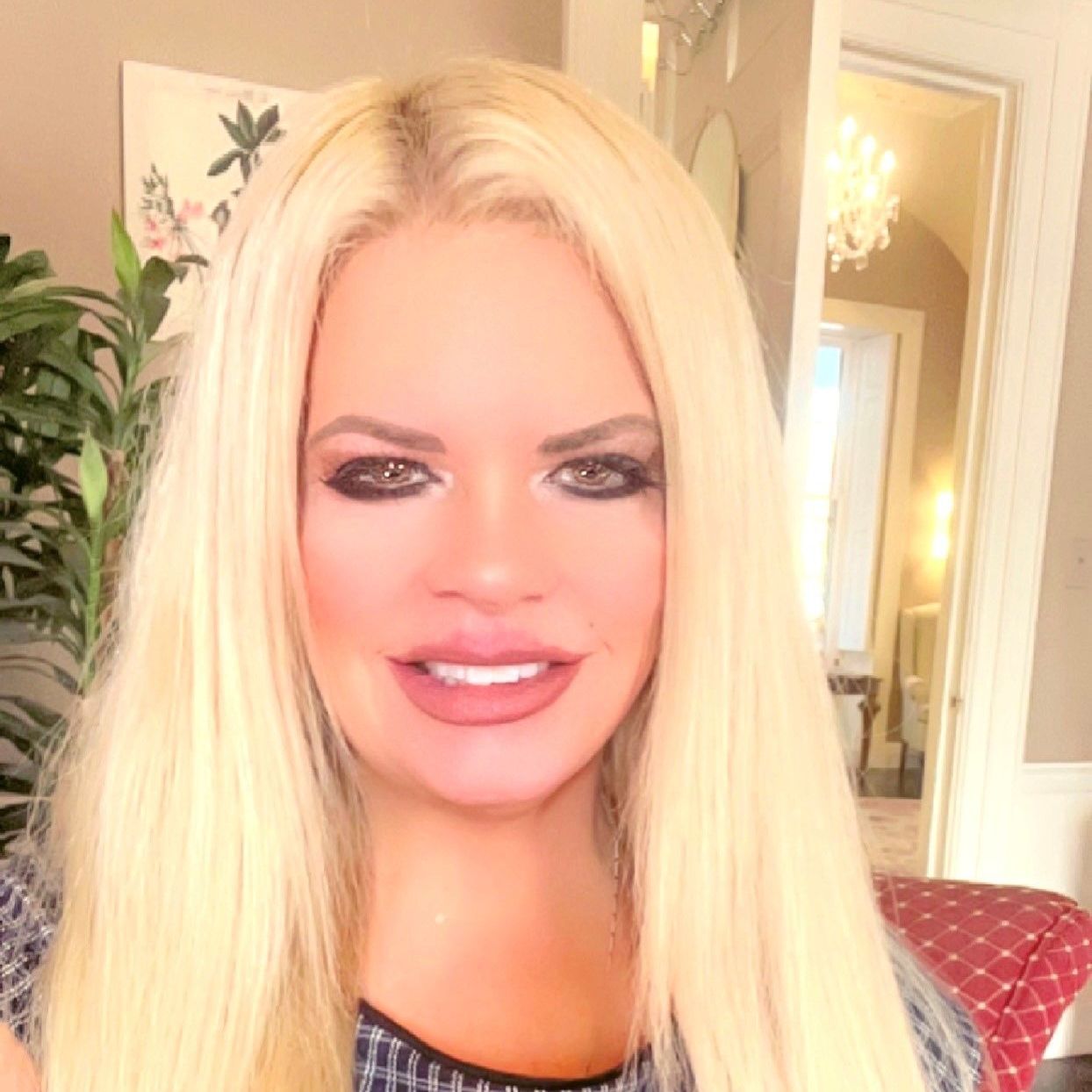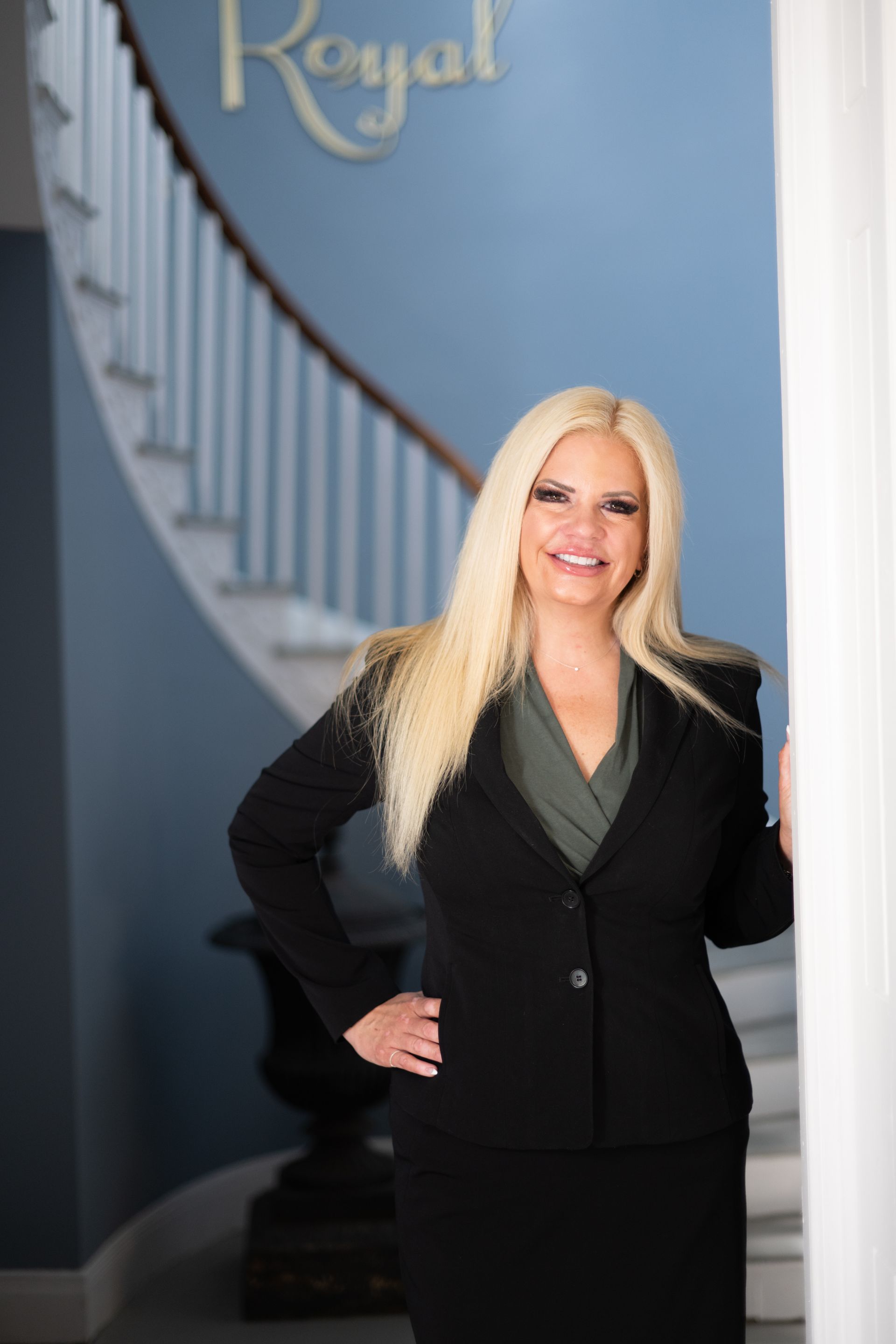News / Media Coverage
Media Coverage

June 2, 2025
Amy Royal sat down with BusinessWest’s Joe Bednar on his podcast, BusinessTalk, to discuss the changing climate of employment law and how to best help clients navigate these changes to avoid legal trouble while building a positive and healthy workplace culture. You can listen to the episode on Spotify, Apple Podcasts, Google Podcasts, or at https://businesswest.com/blog/businesstalk-with-amy-royal-ceo-the-royal-law-firm/ If your business has any questions on this topic or any other matters, please do not hesitate to contact the attorneys at The Royal Law Firm at 413-586-2288.

October 14, 2024
Attorneys Amy Royal and Trevor Brice represent two Defendants, Prosegur Security USA (“Prosegur”) and its senior vice president Fernando A. Arango (“Arango”) in a lawsuit accusing Arango and Prosegur of violations of the Connecticut Uniform Trade Secrets Act, the Federal Defend Trade Secrets Act, and the Connecticut Unfair Trade Practices Act. The lawsuit further accuses Arango of breach of contract, fiduciary duty, and violations of trade secrets and unfair practices laws. A Connecticut federal judge has issued a temporary restraining order and preliminary injunction against Prosegur and Arango. The order mandates that Prosegur and Arango refrain from disclosing any confidential information obtained from Arango’s former employer, United Security Inc. (USI). The injunction requires Prosegur to certify that no USI trade secrets are stored on its systems and to preserve evidence related to the alleged misappropriation. USI alleges that Arango downloaded numerous confidential files, including sensitive business information valued at $85 million, before joining Prosegur. Prosegur and Arango deny any wrongdoing, asserting that competitive pricing, not misappropriated information, led to the acquisition of a key USI client. “Defendants were able to offer plaintiff’s client a better price, without the use of knowledge and/or alleged trade secrets, and subsequently garnered their business,” stated Prosegur. Trevor Brice of The Royal Law Firm LLP further added that, “Defendants deny liability as to the claims brought by plaintiff.” An article detailing this court decision was published in Law360, please click this link to read more.

September 30, 2024
Attorney Elaine Reall, Chief Legal Officer at The Royal Law Firm spoke at a national conference in Atlanta, GA on cannabis law. Elaine, along with Radhi Shah of Zuber Lawler LLP and Lucia de Vernai of Trulieve, Inc., discussed the ethics and legalities surrounding the growing cannabis industry. The National Association of Women and Minority Owned Law Firm 2024 annual meeting was held in Atlanta, GA from September 15-18. While speaking on this panel, Elaine provided insight into the product liability and consumer misrepresentation in this popular industry many are finding themselves investing in. Navigating the legalities around any industry can prove challenging, but a new industry with such rapid growth presents a unique set of questions and challenges that require guidance. Strategies for mitigating risks related to evolving state laws, the FDA’s stance, CBD uncertainties and vaping concerns were discussed along with guidelines for how business stakeholders should navigate legal risks effectively. Elaine served as city solicitor for Northampton, Massachusetts while the first dispensaries were establishing themselves in the city. Due to her municipal experience with regard to the cannabis industry, she has a unique set of qualifications and knowledge that can be used to guide cannabis industry professionals. If you would like to learn more about the cannabis industry on the employer/owner side, join Elaine on October 16 th for a Royal seminar on a regulatory overview and discussion of the impact on cannabis on workplace rules and procedures. This seminar is perfect for H.R. professionals and anyone in a management position as well as cannabis dispensary owners/managers. If you or your business have questions regarding the cannabis industry, Elaine can be reached at ereall@theroyallawfirm.com or by calling our office at (413) 586-2288.
Media Coverage

June 2, 2025
Amy Royal sat down with BusinessWest’s Joe Bednar on his podcast, BusinessTalk, to discuss the changing climate of employment law and how to best help clients navigate these changes to avoid legal trouble while building a positive and healthy workplace culture. You can listen to the episode on Spotify, Apple Podcasts, Google Podcasts, or at https://businesswest.com/blog/businesstalk-with-amy-royal-ceo-the-royal-law-firm/ If your business has any questions on this topic or any other matters, please do not hesitate to contact the attorneys at The Royal Law Firm at 413-586-2288.

October 14, 2024
Attorneys Amy Royal and Trevor Brice represent two Defendants, Prosegur Security USA (“Prosegur”) and its senior vice president Fernando A. Arango (“Arango”) in a lawsuit accusing Arango and Prosegur of violations of the Connecticut Uniform Trade Secrets Act, the Federal Defend Trade Secrets Act, and the Connecticut Unfair Trade Practices Act. The lawsuit further accuses Arango of breach of contract, fiduciary duty, and violations of trade secrets and unfair practices laws. A Connecticut federal judge has issued a temporary restraining order and preliminary injunction against Prosegur and Arango. The order mandates that Prosegur and Arango refrain from disclosing any confidential information obtained from Arango’s former employer, United Security Inc. (USI). The injunction requires Prosegur to certify that no USI trade secrets are stored on its systems and to preserve evidence related to the alleged misappropriation. USI alleges that Arango downloaded numerous confidential files, including sensitive business information valued at $85 million, before joining Prosegur. Prosegur and Arango deny any wrongdoing, asserting that competitive pricing, not misappropriated information, led to the acquisition of a key USI client. “Defendants were able to offer plaintiff’s client a better price, without the use of knowledge and/or alleged trade secrets, and subsequently garnered their business,” stated Prosegur. Trevor Brice of The Royal Law Firm LLP further added that, “Defendants deny liability as to the claims brought by plaintiff.” An article detailing this court decision was published in Law360, please click this link to read more.

September 30, 2024
Attorney Elaine Reall, Chief Legal Officer at The Royal Law Firm spoke at a national conference in Atlanta, GA on cannabis law. Elaine, along with Radhi Shah of Zuber Lawler LLP and Lucia de Vernai of Trulieve, Inc., discussed the ethics and legalities surrounding the growing cannabis industry. The National Association of Women and Minority Owned Law Firm 2024 annual meeting was held in Atlanta, GA from September 15-18. While speaking on this panel, Elaine provided insight into the product liability and consumer misrepresentation in this popular industry many are finding themselves investing in. Navigating the legalities around any industry can prove challenging, but a new industry with such rapid growth presents a unique set of questions and challenges that require guidance. Strategies for mitigating risks related to evolving state laws, the FDA’s stance, CBD uncertainties and vaping concerns were discussed along with guidelines for how business stakeholders should navigate legal risks effectively. Elaine served as city solicitor for Northampton, Massachusetts while the first dispensaries were establishing themselves in the city. Due to her municipal experience with regard to the cannabis industry, she has a unique set of qualifications and knowledge that can be used to guide cannabis industry professionals. If you would like to learn more about the cannabis industry on the employer/owner side, join Elaine on October 16 th for a Royal seminar on a regulatory overview and discussion of the impact on cannabis on workplace rules and procedures. This seminar is perfect for H.R. professionals and anyone in a management position as well as cannabis dispensary owners/managers. If you or your business have questions regarding the cannabis industry, Elaine can be reached at ereall@theroyallawfirm.com or by calling our office at (413) 586-2288.

October 17, 2023
Attorney Trevor Brice was interviewed for this article by Joseph Bednar, BusinessWest. Shannon Rudder remembers her “bad boss.” And she never wanted to be one. “What that bad boss did, what stuck out for me, was that everybody had to cater to how he led,” she said, adding that he believed that was how to maintain a bias-free workplace. Unfortunately, that philosophy can be incompatible with an equitable workplace. “If I’m a single mom, maybe I can meet the deadlines, but I can’t do it in the same exact way as someone who doesn’t have kids, or has kids that are grown, right?” said Rudder, president and CEO of Martin Luther King Jr. Family Services in Springfield. “So in the most rudimentary sense, when you take the -isms and race and all that stuff out of it, that’s equity.” And it’s a concept many businesses neglect when they talk about diversity, equity, and inclusion (DEI) programs, Rudder explained. They’re focused on a diverse workplace, but neglect to create the sort of culture where everyone is seen for their unique makeup and treated not equally, but equitably. She cited a cartoon often used to express the point (see below). It pictures three boys trying to watch a ballgame from behind a fence. The first panel has each standing on a single box; though they’re being treated equally, the shortest boy still can’t see the game. The second panel, by moving those boxes around, demonstrates equity — now everyone can clearly see over the fence. The barriers are different for each member of an organization, Rudder said, and so are the proverbial ‘boxes’ they might need to stand on to do their jobs effectively. (To take it a step further, the cartoon sometimes includes a third panel, labeled ‘liberation,’ with the fence removed completely.) “The CEO of a nonprofit is not the same as a president or CEO of a Fortune 500 company, but conceptually, we can’t sit in our positions of power and think we know what everyone’s barriers are,” she added. “I’ve got to like actually talk to people to figure out what the barriers are. So it’s about the relationships.” It’s also about honest discussions about privilege and internalized biases and weaving equity into every corner of the organization — and that’s not something that can be achieved with a one-off professional-development seminar on DEI. “You’ve got to get to the heart of why there are biases, why folks aren’t being productive working together,” Rudder said. “We’re all socialized very differently. So we need to create environments where folks feel comfortable and they trust each other. You don’t want somebody to feel tokenized; you want to be able to create that authenticity, that trust, so then you can begin to understand what the real barriers are.” Colleen Holmes understands this concept. As president and CEO of Viability Inc. in Springfield, which provides vocational training, job placement, and other supports for individuals with disabilities, she’s worked with employer partners to help them understand how a workplace can benefit from workers from all backgrounds and all abilities. “All the services we offer are around folks having the opportunity and support to be able to build their skills and attain things that are important and meaningful to them in their lives,” she told BusinessWest. “Everything we do is very specifically geared toward helping individuals find their pathway to thriving beyond whatever their limits are. And for individuals with disabilities, those limits are considerable.” But they can be overcome — if an employer is committed to equity. “We take a whole lot of pride and pleasure in working with folks as the individuals they are. That means that we look at the whole person and not one single aspect of their identity, and that’s what DEI is about,” Holmes explained. “The aspects of our identity are layered and complex, and that’s what makes us interesting people.” The said the word ‘accommodation’ carries some baggage because people think it’s a one-way street — that the employer has to accommodate the employee, but isn’t going to benefit from that employee beyond checking a DEI box. “In fact, when employers learn how to think differently in their approaches to getting business objectives met, they have more humanity in their company,” she said, adding that employers who understand this — who are willing to cultivate not only a diverse workforce, but an equitable, inclusive one — have a leg up. Questions Around Diversity The ‘diversity’ piece of DEI has been the source of much discussion lately, as employers have grappled with whether efforts to build a racially (and in other ways) diverse workplace will run afoul of federal law, especially after the U.S. Supreme Court struck down affirmative action in college admissions this past June. “They didn’t directly speak to private employers; it only applies to colleges and universities,” said Trevor Brice, an attorney with the Royal Law Firm in Springfield, adding, however, that there could be ripple effects. “I think the implications of the Harvard and North Carolina ruling go more to reverse-discrimination suits, people in majority groups suing over being given unfavorable treatment in relation to minority groups because of affirmative-action or DEI programs.” To be clear, he added, hiring and firing employees based on their status in protective classes has never been allowed. “What’s almost inevitable is there are going to be challenges to employers based on these cases now.” Mary Jo Kennedy, partner and chair of the Employment Law practice at Bulkley Richardson in Springfield, agreed that the SCOTUS ruling has no immediate impact on the legal standards that govern private employers’ DEI or affirmative-action programs, noting, like Brice, the existing prohibition against making employment decisions solely based on a person’s protected characteristics, like race or gender. “But there is the potential that we may see more reverse-discrimination cases,” she added, before listing several steps employers can take to promote diversity within the bounds of the law: • Avoid considering race as a basis for employment decisions or practices in a way that could be seen as granting race-based preferences; • Review any DEI policies or programs for compliance with federal and state laws; • Understand that it’s OK to prioritize diversity and inclusion but not OK to use race- or gender-based quotas; • Broaden the use of the term ‘diversity,’ understanding that it’s more than just race and gender; and • Review the company website and other public-facing documents and internal DEI materials for compliance with federal and state laws prohibiting discrimination. Employers can also protect themselves against reverse-discrimination cases by carefully documenting the reasons behind every hiring and promotion decision. In other words, it makes sense to cast a wide net to promote a diverse applicant base, but make sure there’s a business case for each decision, and “document, document, document,” Brice said. “Why are you making this decision? Is it solely due to race or other protected characteristics? Then it’s probably not going to stand up to a legal challenge. But high GPA, work history, things like that are fine. So, is this person better-qualified? Just give justification for the decision in case you’re challenged down the road.” Employment-law firms already see plenty of wrongful-termination cases, he added, and there’s a feeling that the June SCOTUS decision will embolden more of them, even though that ruling applies only to higher education. “More needs to be seen. There hasn’t been a legal challenge yet, so there’s no guidance yet.” Making Meaningful Progress Monson Savings Bank President Dan Moriarty has been actively been involved in DEI strategy over the past year or so, not only at his own institution, but through his co-leadership of an executive council established by the Massachusetts Bankers Assoc. to promote DEI efforts across member institutions. “Every individual and every organization is on a different path along the way to being more diverse, equitable, and inclusive in their organization,” he said. “We have a DEI committee here at the bank, and we’re trying to adopt best practices from the Mass Bankers Association for advancing our DEI program.” That process toward a level playing field begins with understanding the dynamics of DEI and the barriers and biases that hinder it, he noted, adding that he and two other MSB leaders recently attended a seminar at the Healing Racism Institute of Pioneer Valley. “That was phenomenal. Just the awareness and deep understanding was very impactful for me personally and professionally. We all have to do more.” Adopting some best practices recommended by Mass Bankers, Monson Savings has created a DEI commitment statement, developed and implemented a DEI program that continues to evolve, provided DEI training to board members and employees, identified and monitored key performance metrics, and conducted periodic self-assessments of the program. In addition, he said, the bank has reviewed numerous documents, including its strategic plan, along with communications, processes, and facilities, to ensure that potential barriers are identified and removed and that DEI expectations are reflected, while also conducting outreach and expanding the bank’s relationships with key community members and organizations. “We have a long way to go with it, but we’re trying to build something. We want to make meaningful progress — not just check a box, but make a difference,” Moriarty said. “People want to do the right thing, but they have to educate themselves and really make a concerted effort to be able to make the change. It’s not just acknowledging we need more diversity, equity, and inclusion, but we also have to take actual steps to get us to a better place.” Viability has seen its employer partners — more than 800 of them nationwide — find that better place. “Some employers are looking to live a philosophy of the organization around diversity, equity, and inclusion because it’s the right thing to do,” Holmes said. “And there is data out there that shows that, if companies have accessible and welcoming environments for individuals with disabilities, consumers are more likely to shop there. And this is something businesses and employers have taken notice of. “DEI is really a no-brainer,” she added. “But it does require a cultural change within an organization.” The Rest of the Story “Injustice anywhere is a threat to justice everywhere.” That’s one of Martin Luther King Jr.’s most popular quotes; just about everyone has heard it. But far fewer, Rudder said, know the rest of the quote, the words King said directly after: “We are caught in an inescapable network of mutuality, tied in a single garment of destiny. Whatever affects one directly, affects all indirectly.” “That’s the nutshell of how I approach the work,” she added. “Our corporate counterparts — and I get why they do it — focus on diversity because that’s a tangible way to demonstrate, ‘we’ve got X percentage of women, we’ve got X percentage that identify as able-bodied or people of color,’ all those identities. I get why diversity comes first. But for me, it’s really centered on equity.” Rudder said she practices ‘culture humility,’ which is a commitment to constant self-evaluation by which people not only learn to understand other cultures, but also critically examine their own — and understand the privileges they enjoy. “If we’re going to aim to be centered in equity, we have to first understand where our privilege is,” she said. “And that goes back to Dr. King’s quote; we are all mutually interconnected. It’s a journey — it’s not just, ‘let’s do this program, and let’s check the boxes.’ We’ve got to weave this into the very fabric of who we are as an organization, as a corporation.”

September 5, 2023
NLRB subjects work rules to ‘employee-friendly’ test Attorney Amy B. Royal was interviewed for this pivotal decision of the NLRB, by Massachusetts Lawyers Weekly's Pat Murphy . A reversal of course by the National Labor Relations Board has management-side lawyers and their clients scrambling to reassess work rules for whether they may now be deemed unlawfully to chill employee rights to engage in concerted activity. A divided NLRB issued its highly anticipated decision in Stericycle Inc. on Aug. 2 . The decision announced a new standard on the question of whether an employer’s work rule that does not expressly restrict employees’ protected concerted activity under Section 7 of the National Labor Relations Act is nevertheless unlawful under NLRA Section 8(a)(1). “[O]ur standard requires the General Counsel to prove that a challenged rule has a reasonable tendency to chill employees from exercising their Section 7 rights,” the Stericycle majority opinion states. “We clarify that the Board will interpret the rule from the perspective of an employee who is subject to the rule and economically dependent on the employer, and who also contemplates engaging in protected concerted activity.” Springfield labor lawyer Amy B. Royal says employers have their work cut out for them. “Employers are going to have to look at any policies, handbooks and work rules that they have and ensure that they are narrowly tailored,” Royal says. “The ultimate burden on the employer is to demonstrate not just that they have a legitimate and substantial need for a particular work rule or policy, but that there’s no other way to accomplish this other than the way it is written. This is a huge departure [from recent NLRB decisions].” Providence employment litigator Shelagh Michaud sees Stericycle as part of a larger trend of decisions and new laws leaning in favor of employee rights. “In addition to rights to unionize and collectively bargain, there are also new rules, laws and guidance on noncompetes that lean toward allowing employees to have more portability and freedom once they leave an employer,” she says. “All of these changes are going to affect not just the way we structure [workplace] policies, but also employment agreements, separation agreements, and how we handle our expectations for key employees.” One labor attorney not surprised by the outcome in Stericycle is Raymond M. Ripple of Boston. “This is just one of several employee-friendly decisions handed down in the last six to eight months from the NLRB,” Ripple says. “It’s an unwinding of some of the things that were put into place under the prior administration and makeup of the NLRB.” Ripple laments the fact that Stericycle creates uncertainty for employers. “Before, [the question was] what a reasonable employee would think when reading this policy — would they interpret it to chill their Section 7 rights,” Ripple says. “Now, it’s going to be looked at from the perspective of an employee who is economically dependent on that employer and who wants to engage in some protected action. ‘Does that civility policy that’s in my employer’s handbook limit me in any way from exercising those rights?’” Reversing course An administrative law judge in Stericycle had found that the respondent employer violated Section 8(a)(1) by maintaining certain work rules addressing personal conduct, conflicts of interest, and the confidentiality of harassment complaints. Section 7 of the NLRA guarantees employees “the right to self-organization, to form, join, or assist labor organizations, to bargain collectively through representatives of their own choosing, and to engage in other concerted activities for the purpose of collective bargaining or other mutual aid or protection,” as well as the right “to refrain from any or all such activities.” “Section 7 applies even when there is no union present,” says Daniel R. Fishman, an employment litigator in Boston. “So [the NLRB’s decision in Stericycle] is something both union and non-union employers need to be aware of.” Section 8(a)(1) makes it an unfair labor practice for an employer “to interfere with, restrain, or coerce employees in the exercise of the rights guaranteed in Section 7.” In reaching a decision in Stericycle, the ALJ followed the analysis in the NLRB’s 2017 ruling in Boeing Co. , as interpreted by the board’s 2019 decision in LA Specialty Produce Co. In Boeing, LA Specialty and subsequent cases, the board applied a standard recognizing that certain categories of work rules — such as rules of civility — are “lawful” when: (1) reasonably interpreted, they do not prohibit or interfere with the exercise of NLRA rights; or (2) the potential adverse impact on protected rights is outweighed by justifications for the rule. But the board in Stericycle replaced the categorical approach of Boeing with a new standard focusing on how employees would interpret a particular work rule. In setting a new standard, the majority made clear that an employer’s intent in maintaining a rule is “immaterial.” “Rather, if an employee could reasonably interpret the rule to have a coercive meaning, the [NLRB’s] General Counsel will carry her burden, even if a contrary, noncoercive interpretation of the rule is also reasonable,” the majority wrote. “If the General Counsel carries her burden, the rule is presumptively unlawful, but the employer may rebut that presumption by proving that the rule advances a legitimate and substantial business interest, and that the employer is unable to advance that interest with a more narrowly tailored rule.” “[Stericycle] essentially imposes a ‘strict scrutiny’ standard on employers once that employee-friendly standard is met,” Michaud says. Moving target? In Stericycle, the board remanded the matter for the ALJ to apply the new standard in rendering a decision. The majority in Stericycle included NLRB Chairman Lauren M. McFerran and members Gwynne A. Wilcox and David M. Prouty. President Biden named McFerran chairman in 2021, the same year he nominated Prouty. Wilcox is also a Biden nominee. Member Marvin E. Kaplan — a 2017 appointee of President Trump — dissented in Stericycle. Kaplan argued that the board’s new standard places employers in an untenable position. “The majority says that employers are free to maintain work rules that protect their legitimate interests, so long as they narrowly tailor their rules so that no word or phrase could possibly be interpreted, by a reasonable employee as my colleagues define that being — i.e., an unreasonably hypervigilant employee — to restrict Section 7 activity,” Kaplan wrote. “However, as the Board observed in Boeing, and as Chairman [William B.] Gould explained nearly 25 years ago in Lafayette Park Hotel, it is virtually impossible to craft work rules that are general enough to serve their intended lawful purpose without being susceptible to an interpretation that infringes on Section 7 rights.” To Providence labor attorney Matthew H. Parker, the shifting tides at the NLRB have gotten more than a bit tiresome for employers. “Frustratingly, the NLRB’s standard for assessing the legality of workplace rules has been a moving target for decades,” Parker says. “Generally speaking, updating handbooks every few years as the political majority of the NLRB shifts back and forth is unnecessary and inefficient.” Fishman couldn’t agree more. “Employers like predictability,” he says. “If they know the rules to the game, they are more likely to follow them.” According to Fishman, the board’s elimination of the categorical approach adopted in Boeing removes predictability for the employer. Keeping things simple Fishman says that employers should take Stericycle as an opportunity to review their employee handbooks and workplace policies that may touch on NLRA Section 7 rights. In that regard, he notes that the NLRB’s general counsel has taken the position that employers can provide themselves with some measure of protection by adopting a prophylactic policy explicitly stating that the employer’s workplace policies and rules should not be interpreted as restricting NLRA Section 7 rights. “If you’re focusing on how reasonable interpretations of a policy don’t chill Section 7 rights, a policy directly addressing that issue would be a big help in defending an unfair labor practice [allegation],” Fishman says. “For certain explicit policies, for example, policies that tell employees not to discuss wages with other employees, a prophylactic policy is not going to cut it. But it would certainly be helpful for [defending] more nebulous, facially neutral policies like social media policies or respect-in-the-workplace policies.” According to Parker, one way to keep things simple is for the employer to view its workplace policies through the lens of a union agent who might try to challenge them. “If there is no business need for a broad rule, narrow it. If you need to clarify that a rule does not restrict protected concerted activity, say so,” Parker advises. “If you assume that (a) sweeping and ambiguous rules will always draw scrutiny, and (b) every rule needs to be based upon a legitimate business interest, employers can avoid most challenges and still maintain appropriate standards.” In gauging the kinds of workplace rules that will come under increased scrutiny under the Stericycle decision, Fishman points to social media policies. “Any policies regarding bad language or respect in the workplace could find themselves being scrutinized for whether they meet this new standard,” he says. More work for lawyers? Fishman says it’s too soon to gauge whether the NLRB’s decision in Stericycle will spawn more legal challenges to workplace policies. “But the change from Boeing to Stericycle certainly shifts the playing field [against] employers,” he says. “It’s going to be much harder for employers to prevail under Stericycle than they could under Boeing.” Michaud’s practice in Providence includes a significant amount of advice to clients on the drafting of employment policies. Stericycle is likely to lead to increasing scrutiny of confidentiality and conflict-of-interest policies, she says. “I could see the anti-moonlighting and noncompete provisions being ratcheted back,” Michaud says. “I could also see [Stericycle affecting] how we do social media and technology policies, as well as employers that engage in monitoring or recording [employees]. There’s also a difference between what a policy states and what the practice is, so there will be a lot of training and retraining of not just those high-level employees and HR managers that help draft the policies, but also of those supervisors who implement the policies.” Royal likewise sees Stericycle as having a broad reach. “There could be implications for non-disparagement provisions, confidentiality provisions, codes of conduct — even dress codes,” the Springfield attorney says. “This is certainly a point in time when employers need to look at all of their policies and consult with their labor counsel to make sure those policies aren’t subject to challenge.” According to Fishman, the big concern for employers is the termination of an employee under what is ultimately determined to be an overly broad workplace rule. “If that person prevails — which they have a better chance to given Stericycle — that employee could get back pay and a reinstatement order, both of which are pretty costly in terms of dollars and headaches,” Fishman notes.

March 1, 2023
Amy Royal was interviewed by BusinessWest for an article published in their most recent edition. Amy Royal, a principal with the Springfield-based Royal Law Firm, long-time supporter of the Springfield Ballers, and one-time coach of a team, agreed. “It’s so important in so many ways because the Ballers programming does so many different things in the community,” said Royal, who worked with Gee to create the 501(c)(3) nonprofit entity for the agency. “It’s not just about playing basketball or getting instructional lessons in golf; it’s not just about the sports — it’s about learning to be on a team, be with other kids, getting exposure to a diversified group. “Also, the Springfield Ballers do a lot of different camps, providing an opportunity to do something when school is out of session — and do something that’s good and positive and productive,” she went on. “There’s also the mentorship and the mentoring programs, the academics, and beyond; it’s all very essential.” It certainly is, and that reality goes a long way toward explaining why the Springfield Ballers are part of BusinessWest’s Difference Makers class of 2023. Click here to read the full article!










